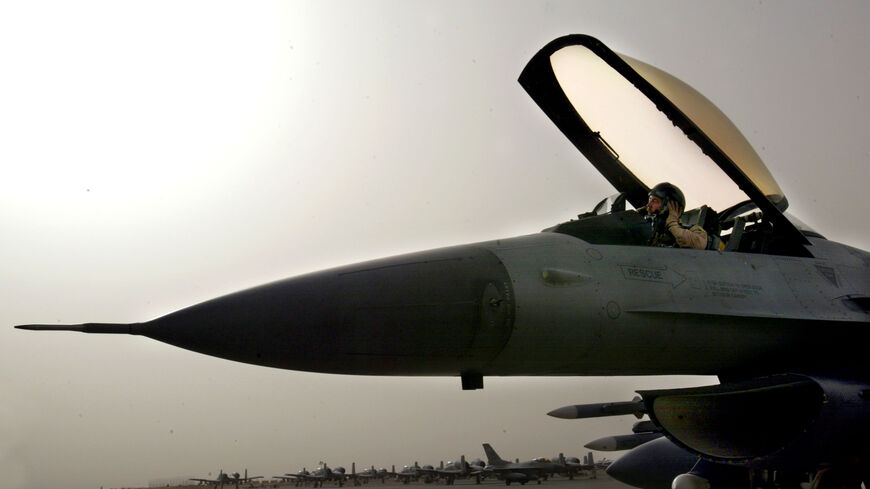DUBAI — Saudi Arabia, Qatar and Egypt were classified among the top 10 global arms importers from 2018 to 2022, according to a report published Monday by the Stockholm International Peace Research Institute (SIPRI).
Arms imports by Middle Eastern and North African countries in those five years were overall 8.8% lower than the previous five-year period from 2013 to 2017, and the United States accounted for 54% of them.
France (12%), Russia (8.6%) and Italy (8.4%) came after Washington as the top suppliers of weaponry to the region.
Saudi Arabia was the world’s second-largest arms importer during that period and received 9.6% of all arms imports, second only to India at 11%, according to SIPRI’s Trends in International Arms Transfers 2022.
The kingdom received the vast majority, 78%, of its imports from the United States, which included the delivery of 91 combat aircraft, hundreds of land-attack missiles and over 20,000 guided bombs.
France and Spain fell far behind the United States as Saudi Arabia’s second- and third-largest arms suppliers, providing 6.4% and 4.9% of imports respectively.
Qatar was ranked as the third-largest weapons importer, taking in 6.4% of the world’s arms. Its top supplier was also the United States, accounting for less than half of its imports at 42%, followed by France (29%) and Italy (14%).
In the last five years, Qatar imported 36 combat aircraft from France, 36 from the United Kingdom, and three frigate warships from Italy.
Egypt came in at sixth position, accounting for 4.5% of global arms imports during the five-year period. Its main supplier was Russia at 34%, followed by Italy and France both at 19%.
Eastern Mediterranean countries like Egypt notably increased their naval capabilities between 2018 and 2022 as a result of ongoing maritime disputes, SIPRI stated.
Egypt, Israel and Turkey have received a number of frigates from leading European arms exporters, with the latter two having placed orders for submarines from Germany that are expected to arrive starting this year.
Who were the five largest arms importers in 2018–22?
— SIPRI (@SIPRIorg) March 13, 2023
1) India🇮🇳
2) Saudi Arabia🇸🇦
3) Qatar 🇶🇦
4) Australia🇦🇺
5) China🇨🇳
Together, they received 36% of total global arms imports in 2018–22. New SIPRI data on global #ArmsTransfers out now ➡️ https://t.co/FHS8ExK3Cv pic.twitter.com/EDD0xltLsC
The United States, the world’s top arms exporter, barely made it as one of the top 10 arms importers, coming in at 10th place. The United Arab Emirates and Kuwait followed immediately behind the United States in the 11th and 12th positions respectively, with Washington providing the majority of their imports at 66% for the UAE and 78% for Kuwait.
Middle Eastern countries made up more than a fourth of the top 40 global arms importers from 2018 to 2022, according to SIPRI.
Iran, on the other hand, has imported a very low amount of arms compared to its Gulf neighbors since 1993, with its imports from 2018 to 2022 being nearly zero, according to the think tank.
Last year Iran placed an order for 24 combat aircraft from Russia, which was its first significant procurement of combat aircraft since the early 1990s. Both countries are under US and European sanctions.
Middle East and North African countries rank among the top 40 greatest global arms importers from 2018 to 2022, with over 32% of the market share. Here is how MENA countries ranked on SIPRI's index:
Saudi Arabia 9.6%
Qatar 6.4%
Egypt 4.5%
UAE 2.7%
Kuwait 2.4%
Israel 1.9%
Algeria 1.8%
Turkey 1.3%
Morocco 0.8%
Jordan 0.5%
Bahrain 0.5%
Israel was the Middle East and North Africa’s greatest exporter of weapons at 10th with 2.3% of global arms exports from 2018 to 2022.
Turkey ranked 12th with 1.1% of exports, the UAE 18th at 0.4% and Jordan 25th accounting for 0.2% of global arms exports.
In the case of Turkey, SIPRI reported a sharp decline in US arms exports to its NATO ally. Turkey has become the 27th largest recipient of US arms between 2018-2022, dropping from the seventh largest between 2013-2017 as a result of worsening bilateral relations.
Washington expelled Turkey from its F-35 stealth fighter jet program in 2019 over Ankara’s purchase of Russian-made S-400s.
Turkey’s bid to buy new F-16 fighter jets and modernization kits also faces an uphill battle in the US Congress.
Meanwhile, Turkey’s arms exports increased by 69% from the 2013-2017 period, the report noted.
The top three global arms exporters were the United States, dominating 40% of the market share during the five-year period, with Russia and France falling behind at 16% and 11%.
Ezgi Akin in Ankara contributed to this report.


.jpg?h=484aaada&itok=l9O0K7bm)




